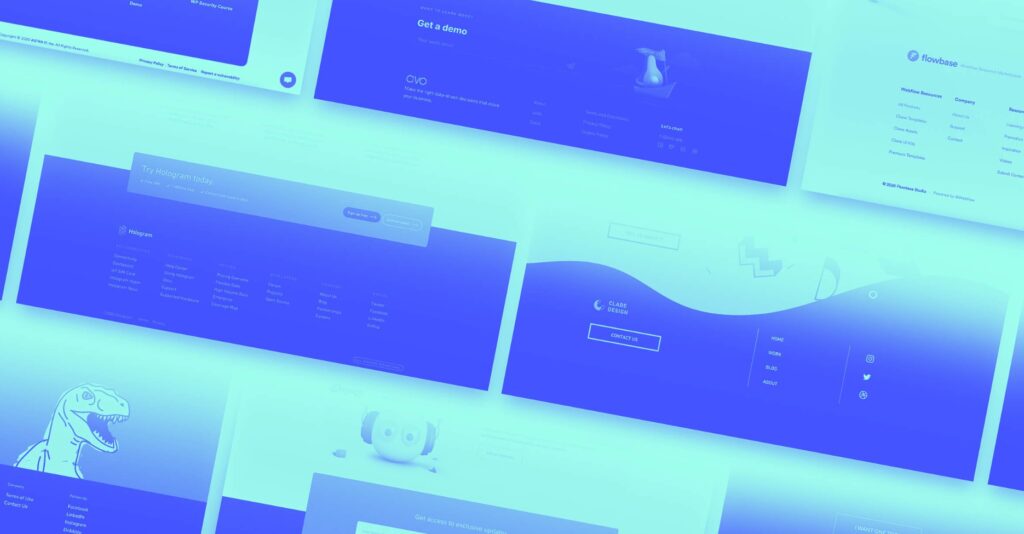What elements should a website footer include?
A footer plays a vital role in creating a positive user experience. It helps to keep visitors on the page even after they have reached the bottom of the page. The footer commonly displays menu items that allow visitors to learn more about the company and its offerings. It also provides contact details and other significant information.
When working with the footer, it is essential to remember that this element forms the visitor’s final impression of the page and the site as a whole. This is especially important for new users visiting the resource for the first time and have yet to become familiar with its features. This is why the footer deserves special consideration.
How to design an effective footer
The most considerable design principle is simplicity. The structure of the footer should be understandable to visitors so that they can quickly find the section of the site or information they are looking for. This element should work so you do not have to scroll up the page to search. Algorithm of actions:
- as you begin creating your footer, focus on key elements such as your homepage, contact information and social media links;
- if you are going to link to more than one, it is better to use vertical alignment;
- when placing an image in the footer, it is necessary to ensure its clarity and choose a small size;
- graphics and statistics are not appropriate here.
Ensure that the design is simple and harmonious, with the colour scheme and typography creating a coherent image that fits perfectly with the theme and structure of the site.

The best perception of the footer and its readability are influenced by the indentation and correctly chosen distance between words and lines.
The footer menu is an important navigation element, and its structure should reflect the main menu items. This allows users to easily access essential areas of the site, even after scrolling down the page. Such practical solutions improve the site’s usability and the overall user experience. In addition, well-designed navigation is also a vital SEO tool.
A form to subscribe to the company newsletter can be a great solution. This makes the collection of user data unobtrusive and more effective.
Another significant element of the footer is legal information. This includes the site’s copyright, ownership, privacy, and cookie policies.
In addition to the labelled information, the footer can contain additional content to enhance the user experience. Including information about support for community organisations, climate change targets, and other social and environmental initiatives can effectively strengthen a company’s image and build positive relationships with users. The key is to ensure that the information posted aligns with consumers’ values, then it will be received positively.
